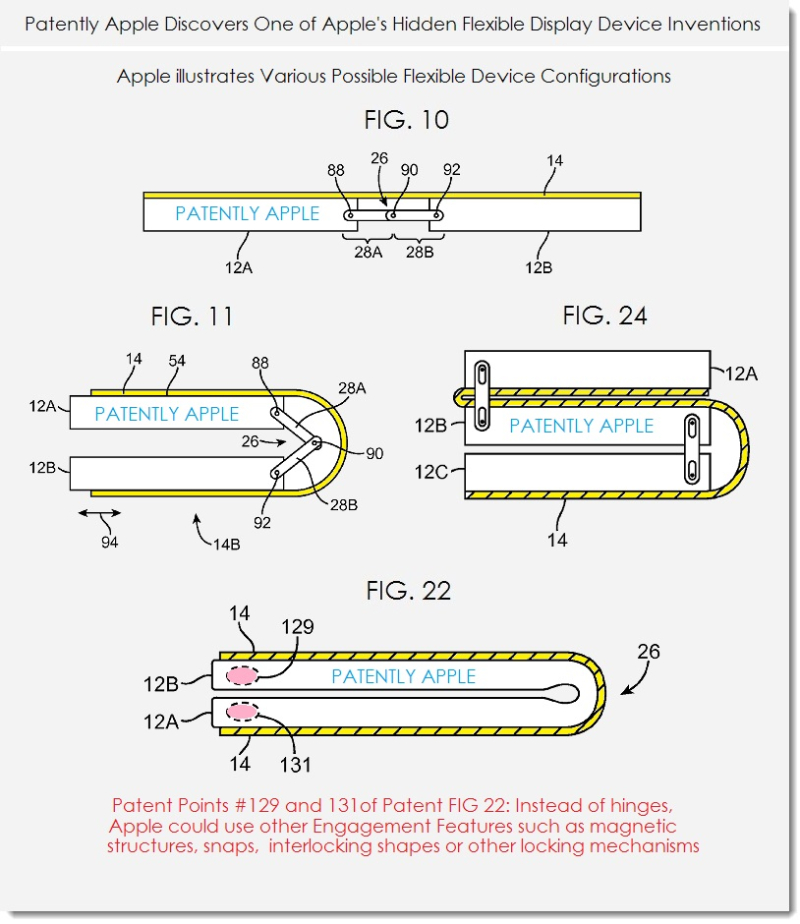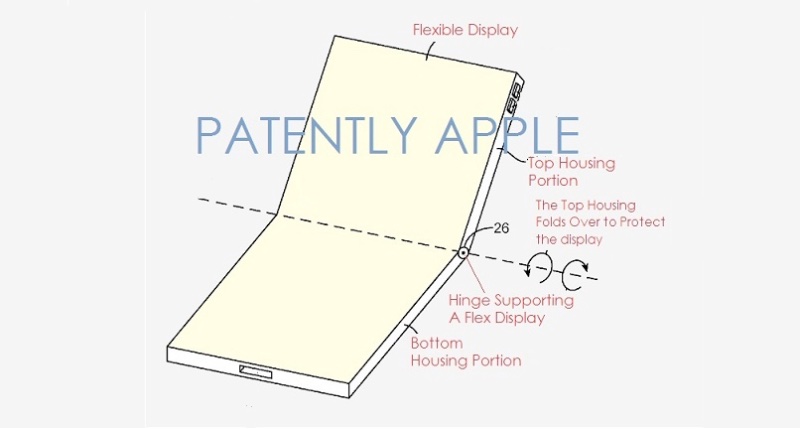Apple's Foldable iPhone Patent Reveals Magnetic Secret
All the pieces are falling into place for a next-generation foldable iPhone that hopefully will be more compact than a patent suggests.
The US Patent and Trademark Office has awarded a new foldable phone patent to Apple.
The text and graphics detail how the actual folding mechanism would work, including a rather interesting mechanism that uses one of Apple’s favorite tricks: magnetism.

The patent — which is the second patent related to a potential foldable iPhone after the flexible battery patent awarded on March — details the many potential ways in which this flexible iPhone would fold.

In addition to two three different types of mechanical hinges — detailed in figures 10, 11, and 24 — there’s a hinge-less design that uses magnets at the top and bottom ends of the phone to secure it in place when folded.
MORE: Samsung's Galaxy X Will Morph From Tablet to Phone
The patent also claims that magnets could be substituted for snaps or interlocking shapes but, knowing Jony Ive, the most elegant and Apple-like way to do this would be the magnetic locking mechanism.
The patent also shows a model in which there are not two but three sections to the flexible panel, making the flexible phone a triptych, which could result in a more compact size when folded while maintaining a large surface when unfurled.
Get instant access to breaking news, the hottest reviews, great deals and helpful tips.

According to Bank of America Merrill Lynch analyst Wamsi Mohan, a foldable iPhone will come in 2020, allegedly a year after Samsung and Huawei will launch their respective foldable phones — according to their respective CEOs.
With this second Apple foldable phone patent — and Huawei and Samsung racing to be first — a foldable iPhone seems like a mere matter of time. With the current insane phone size arm race, that time is not coming fast enough.
Jesus Diaz founded the new Sploid for Gawker Media after seven years working at Gizmodo, where he helmed the lost-in-a-bar iPhone 4 story and wrote old angry man rants, among other things. He's a creative director, screenwriter, and producer at The Magic Sauce, and currently writes for Fast Company and Tom's Guide.

